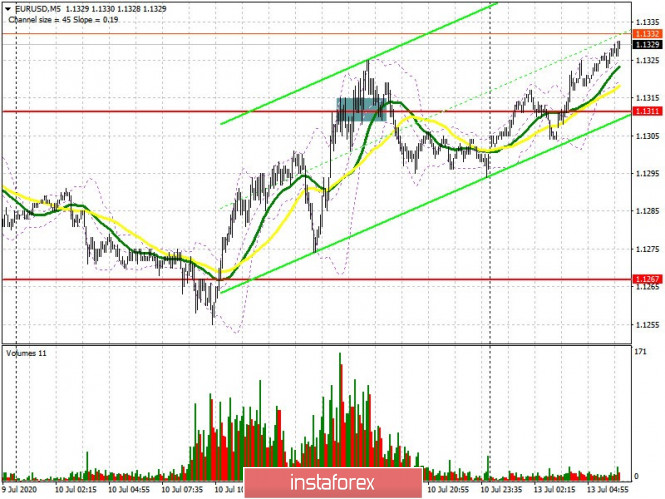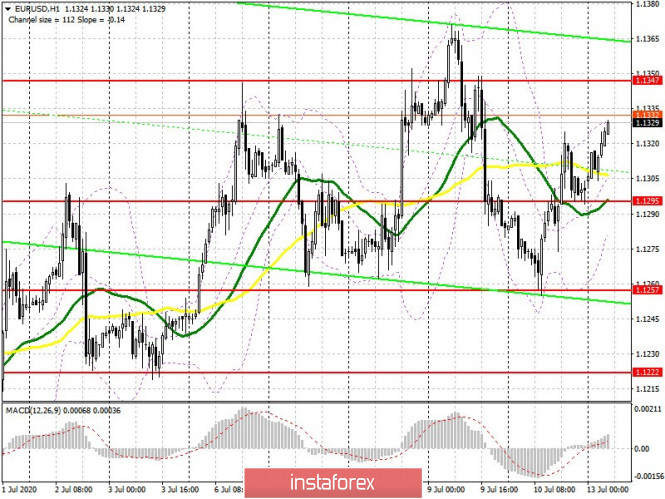To open long positions on EUR/USD, you need:
The euro strengthened after buyers gave an active rebuff at 1.1267 last Friday, forming the first signal to buy the euro. If you look at the 5-minute chart, you will see how the bulls were active and just above the resistance of 1.1311, but it was not possible to form a larger wave of growth at the end of the week. At the moment, hourly chart levels have slightly changed. Buyers are aiming for a breakout and consolidation above the resistance of 1.1347, which will lead to a larger upward trend to the high of 1.1395 and 1.1430, where I recommend taking profits. However, you should remember that important fundamental data will not be released today, so it is likely that market volatility will be at a low level. In the event of a downward correction of the pair in the first half of the day, forming a false breakout in the support area of 1.1295 will be a signal to open long positions. Buy EUR/USD immediately on the rebound, I advise doing so from a low of 1.1257, counting on a correction of 30-40 points within the day.

To open short positions on EUR/USD, you need:
The bears failed to push the market below the level of 1.1267, which has now transformed into support for 1.1257. Good news from the president of the Eurogroup regarding support for the European Commission's 750 billion euro bailout plan had a positive impact on buyers last Friday. At the moment, sellers must return to the 1.1295 range, but it is best to open short positions from it only after consolidating below this area. Such a scenario will return EUR/USD to the area of a low of 1.1257 and allow you to count on updating the support of 1.1222, where I recommend taking profits. If the bulls continue to be active, then it is best to look at short positions only after forming a false breakout at the level of 1.1347, but you can sell EUR/USD immediately on the rebound from a larger high of 1.1395, counting on a correction of 25-30 points within the day.

Indicator signals:
Moving averages
Trading is conducted just above the 30 and 50 moving averages, which indicates the sideways nature of the market.
Note: the period and prices of moving averages are considered by the author on the hourly chart H1 and differ from the general definition of the classic daily moving averages on the daily chart D1.
Bollinger Bands
Breaking the upper limit of the indicator in the area of 1.1325 will lead to an increase in the euro. A break in the lower border at 1.1285 will increase the pressure on the pair.
Description of indicators
- Moving average (moving average, determines the current trend by smoothing out volatility and noise). Period 50. It is marked in yellow on the chart.
- Moving average (moving average, determines the current trend by smoothing out volatility and noise). Period 30. It is marked in green on the chart.
- MACD indicator (Moving Average Convergence/Divergence — convergence/divergence of moving averages) Fast EMA period 12. Slow EMA period to 26. SMA period 9
- Bollinger Bands (Bollinger Bands). Period 20
- Non-comercial traders are speculators, such as individual traders, hedge funds, and large institutions that use the futures market for speculative purposes and meet certain requirements.
- Long non-commercial positions represent the total long open position of non-commercial traders.
- Short non-commercial positions represent the total short open position of non-commercial traders.
- The total non-commercial net position is the difference between short and long positions of non-commercial traders.
